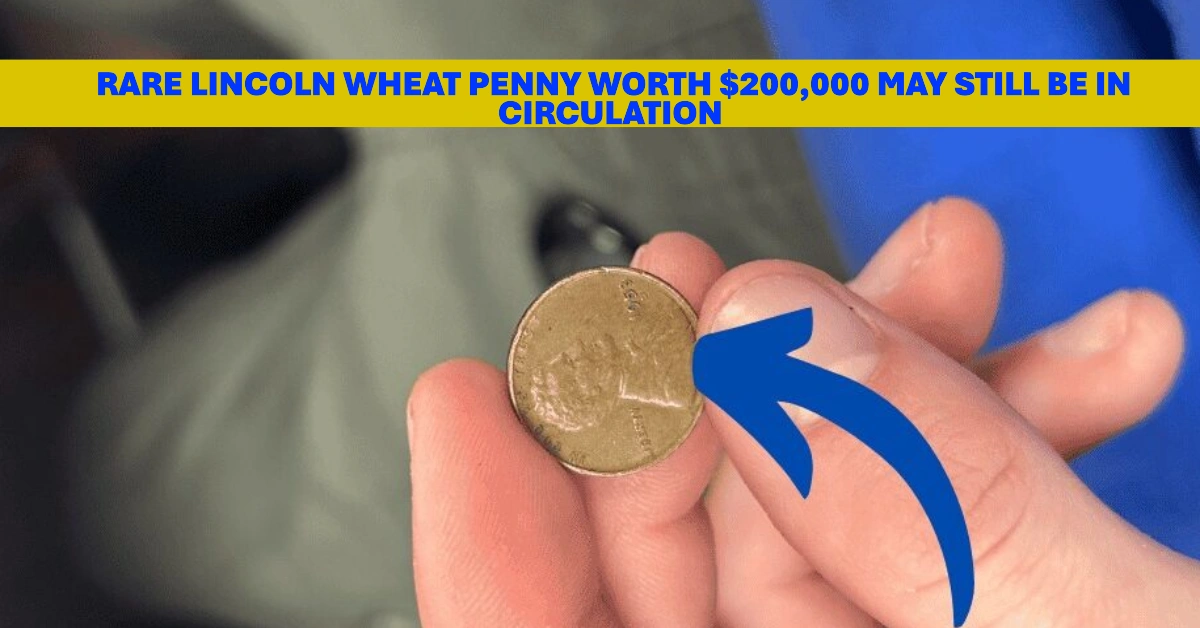Lincoln Wheat Pennies are more than just old coins—they’re tiny pieces of American history, and for a lucky few, they could also mean a big payday. While these pennies were first minted in 1909 and can still occasionally be found in pocket change today, some rare versions are worth thousands—or even hundreds of thousands—of dollars.
In this article, we’ll explore why some of these small copper coins are incredibly valuable, how to spot one, and what makes certain Lincoln Wheat Pennies worth a small fortune.
Table of Contents
A Brief History of the Lincoln Wheat Penny
Celebrating Lincoln’s Legacy in Coin Form
The Lincoln Wheat Penny was introduced in 1909 to mark the 100th anniversary of President Abraham Lincoln’s birth. It was the first U.S. coin to feature a real historical figure, replacing the traditional Liberty portrait with a bust of Lincoln.
The reverse side featured two stylized wheat stalks flanking the words “ONE CENT” and “UNITED STATES OF AMERICA.” This iconic design, created by sculptor Victor David Brenner, remained in use until 1958, when it was replaced by the Lincoln Memorial penny.
Minted in Massive Numbers—but Some Are Exceptionally Rare
While millions of Wheat Pennies were minted between 1909 and 1958, a small number stand out due to rare errors, limited production runs, or other unique features. These exceptional coins are the ones collectors covet—and they’re also the ones worth serious money.
What Makes a Lincoln Wheat Penny So Valuable?
Rare Minting Errors and Low Production Numbers
The high value of certain Lincoln Wheat Pennies typically stems from one of two factors: scarcity or mistake.
Coins that were minted in very small numbers or contain rare errors are often considered collector’s items. A handful of these pennies have sold for over $100,000 at auction, with some known examples fetching close to half a million dollars.
Examples of Exceptionally Valuable Wheat Pennies
Here are three of the most famous—and valuable—Lincoln Wheat Pennies ever discovered:
1909-S VDB Penny
This is the crown jewel for many collectors. Minted in San Francisco in 1909, the coin features the designer’s initials “VDB” prominently on the reverse. Public backlash over the prominent initials led to their removal, making this version incredibly rare. Only about 484,000 were produced.
1914-D Penny
Struck in Denver, the 1914-D penny is rare due to a very limited mintage. Fewer were produced than other years, and many were lost or damaged over time. A 1914-D penny in excellent condition can command tens of thousands of dollars.
1943 Copper Penny
Due to wartime shortages, most 1943 pennies were made from zinc-coated steel instead of copper. However, a few copper blanks accidentally made it into the presses, resulting in one of the most valuable error coins in U.S. history. Only a few dozen are known to exist, and they’ve sold for upwards of $250,000 at auction.
How to Identify a Valuable Lincoln Wheat Penny
Year and Mintmark
Always check the year and mintmark on the coin. Mintmarks include:
- “S” for San Francisco
- “D” for Denver
- No mark for Philadelphia
Certain years combined with specific mintmarks are significantly more rare than others.
Condition Matters
Grading is crucial when it comes to coin value. Coins in uncirculated or mint condition are worth far more than those that are heavily worn or damaged. A lightly circulated 1914-D might be worth a few thousand dollars, while one in pristine condition could fetch $40,000 or more.
Look for Errors
Some of the most valuable Lincoln Wheat Pennies are those with minting errors. These include:
- Double dies
- Off-center strikes
- Misprinted letters or dates
- Wrong metal composition
If you find a penny that looks unusual, don’t spend it—have it evaluated by a professional coin grader.
Can You Still Find Rare Lincoln Wheat Pennies in Circulation?
Yes, It’s Still Possible—Though Uncommon
Believe it or not, Lincoln Wheat Pennies can still turn up in pocket change, estate sales, coin jars, and even old piggy banks. While most Wheat Pennies are worth only a few cents, the rare ones could still be out there—waiting to be discovered.
Your best chances? Search through older coin rolls, visit antique shops, attend coin shows, or check with local coin dealers.
Conclusion: Is There a Fortune in Your Change?
The Lincoln Wheat Penny might just be the most valuable piece of spare change in American history. While most of these coins are worth little more than a cent, a small number are incredibly rare and highly valuable to collectors.
Whether you’re a seasoned numismatist or just someone who likes to check their change, it’s worth taking a closer look at those old pennies. One small copper coin could end up being worth thousands—or even hundreds of thousands—of dollars.
